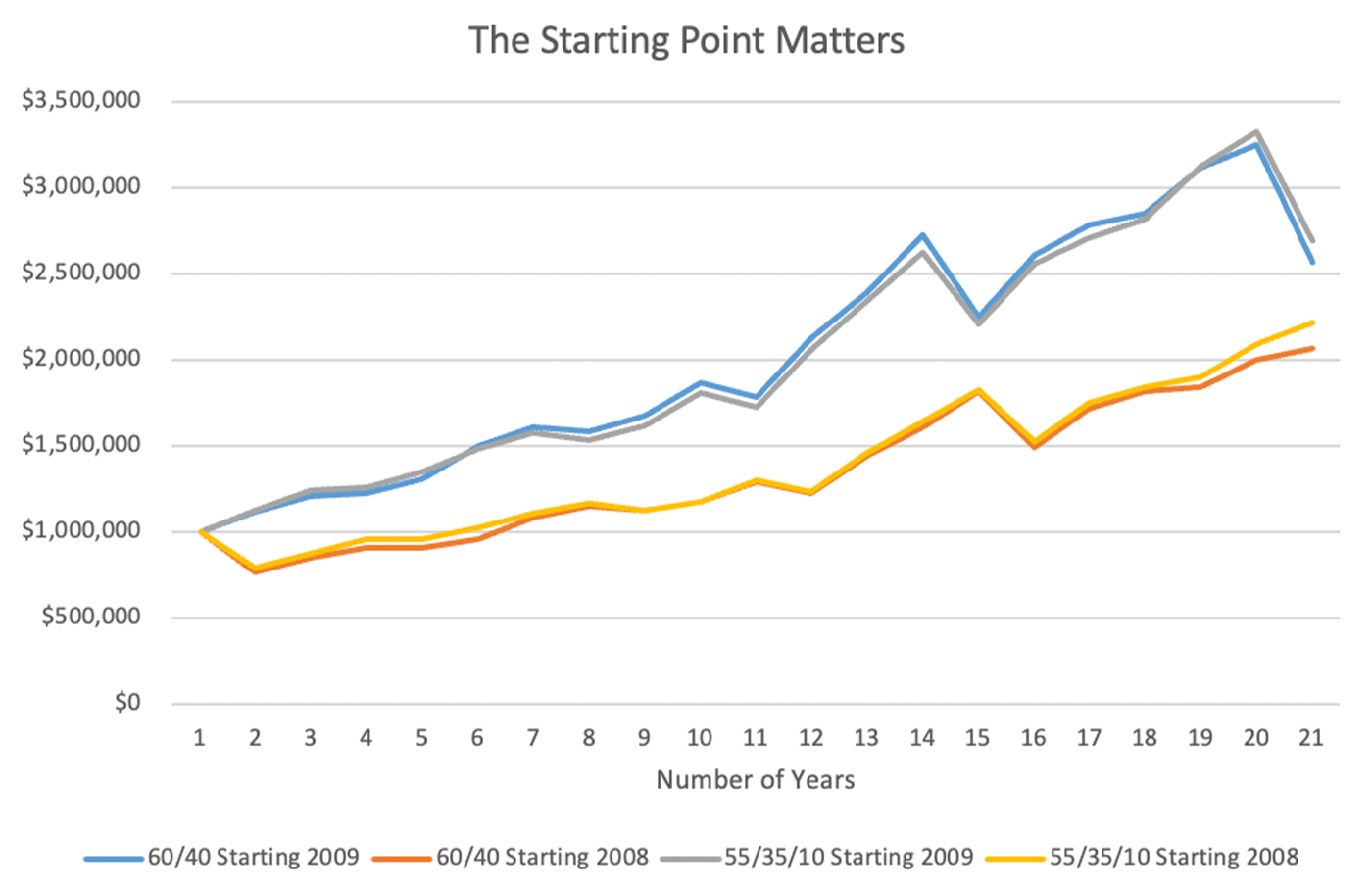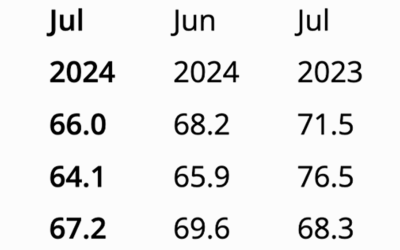The benefits of true diversification
The benefits of true diversification

A key portfolio objective should be to minimize outcome variability. This is the foundation for “true” diversification, blending uncorrelated asset classes and different investment strategies.
iConnections recently hosted an event in Miami called Global Alts, a gathering of alternative investment managers and allocators. Given my Michigan roots, enduring Miami in January was quite the cross to bear—but someone had to do it!
The event is set up like speed dating, but for investment managers—allowing allocators to meet each other and discover funds and strategies they might not otherwise encounter. On one day alone, I had 19 scheduled meetings—and those didn’t include several other impromptu introductions and casual chats.
In general, my outlook on investing is, “If you focus on how something could lose money, the upside will take care of itself.” Events such as Global Alts allow me to hear a variety of perspectives from investment managers with specific and niche approaches to growing and preserving wealth.
What captivated me most at this event were discussions centered on risk management, especially those emphasizing the concept of path dependency. This principle is critical to the long-term success of any investor—whether it’s an endowment or an individual planning for retirement.
Path dependency is the idea that success hinges on a single, unique opportunity, with no chances for a redo. What you do today matters for tomorrow—and we can’t predict the outcome.
Given this uncertainty, the best thing to do from a planning perspective is to minimize outcome variability, or reduce volatility. This idea is the foundation for diversification.
The power of smart choices
Most people think of diversification as “owning a lot of things.” But effective diversification is more than just holding a variety of assets; it’s about selecting assets that are uncorrelated and interact to positively benefit a portfolio. In the context of modern portfolio theory, this strategy aims to shift the efficient frontier upward, optimizing returns for a given level of risk.
Let’s start with a simple hypothetical example and build on it. Imagine an individual earning $50,000 per year—or a business or institution where $50,000 represents its top-line revenue. In this case, the income variability is low, making budget planning straightforward.
Now, consider a situation where the income changes: one year it’s $50,000, the next it increases to $55,530, and the following year it drops to $49,388. This is where it starts to get a little tricky.
Now let’s consider how to manage investments to accommodate these fluctuations. Take, for example, a traditional 60/40 portfolio split between the S&P 500 and the Barclay’s Aggregate Bond Index. Over the last 20 years, the annual volatility of such a portfolio has been around 11%.
To further illustrate the issue of path dependency, let’s look at four scenarios in which we start with a $1,000,000 investment and withdraw 4% of the initial capital—or a fixed $40,000 per year—for 20 years. In each scenario, rebalancing is done quarterly, and the distribution is assumed to be taken on January 1 of each year.
We’re looking at two portfolio compositions: one comprising stocks and bonds, and another adding gold to the mix. To extend our data across 20 years, we will “wrap” the data to show the impact of starting and ending on a down year. For the scenarios that began in 2009, once their series ends, we will wrap back around to 2004’s data and then end in 2008. For the series that begins in 2008, we will wrap back around and end in 2007. By doing this, we maintain identical average returns across all scenarios, which include:
- A 60/40 stocks/bonds portfolio with distributions starting in 2009.
- A 60/40 stocks/bonds portfolio with distributions starting in 2008.
- A 55/35/10 stocks/bonds/gold portfolio with distributions starting in 2009.
- A 55/35/10 stocks/bonds/gold portfolio with distributions starting in 2008.
FIGURE 1: COMPARISON OF DIFFERENT DISTRIBUTION START DATES FOR TWO PORTFOLIO APPROACHES

Source: Flexible Plan Investments
After an initial glance at the chart, you may not think there’s much difference between each scenario, but the devil is in the details. Look at the difference in the ending values in the following table and consider that the only thing we did was add a 10% weighting to gold, which we rebalanced quarterly, and changed the year distributions started.
TABLE 1: ENDING VALUES FOR DIFFERENT DISTRIBUTION START DATES FOR TWO PORTFOLIO APPROACHES

Source: Flexible Plan Investments
The difference between the 60/40 portfolios is $497,417 and the difference between the portfolio with 10% gold is $480,207. While the adjustments might seem trivial, if a 10% allocation to a less correlated asset can produce a noticeable outcome to tighten up the range of expected future results, it is worth looking into at the portfolio level. Opting for slightly lower returns in favorable conditions can lead to more stable outcomes during downturns. After all, starting distributions just one year apart resulted in a nearly $500,000 different ending value in our scenarios.
Further emphasizing the importance of the distribution start period, the compounded rate of return and risk-adjusted metrics from 2004 through 2023 shows that a portfolio of stocks, bonds, and gold outperformed a portfolio of stocks and bonds—which means that adding a more volatile yet uncorrelated asset can actually improve return outcomes. The portfolio with gold has a higher ending value if distributions begin in 2008 or 2009. In the following table, you can see the benefits of uncorrelated assets, like gold, across the board.
TABLE 2: THE BENEFITS OF ADDING GOLD TO A ‘TRADITIONAL’ PORTFOLIO ALLOCATION

Source: Flexible Plan Investments (12/31/2003 through 12/29/2023)
True diversification is the key to building a resilient portfolio
Talking with other risk managers at the Global Alts conference made me really think about fringe tail events and edge cases. Predicting the next global financial crisis or pandemic is not important. It’s far more critical and prudent to prepare for adverse outcomes in general by having a portfolio designed to absorb shocks, thereby reducing the risk of catastrophic losses.
Diversification should go beyond merely “owning more things.” Stocks are still stocks, and they are going to correlate. True diversification is about reducing uncertainty for outcomes in a very uncertain environment and diversifying with the right things. For example, the S&P 500 has nearly a 0.70 correlation to non-U.S. developed markets. Effective diversification requires broadening beyond just equities, incorporating varied asset classes such as real estate and commodities—as demonstrated with gold in our example—and blending different investment strategies, including both passive and active approaches. Further refinement involves diversifying across strategic styles, like relative value, volatility management, CTAs, and trend followers.
Take some time to consider how adding different, uncorrelated styles could improve your clients’ risk-adjusted performance and reduce the potential for undesirable negative outcomes.
The opinions expressed in this article are those of the author and the sources cited and do not necessarily represent the views of Proactive Advisor Magazine. This material is presented for educational purposes only.
RECENT POSTS









